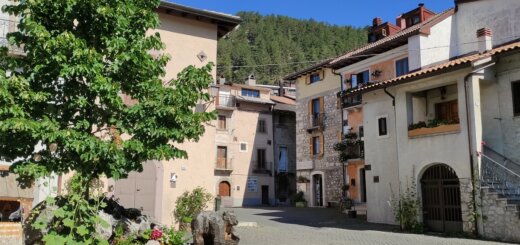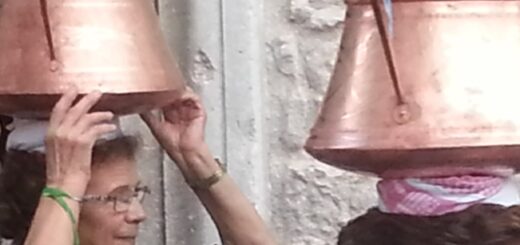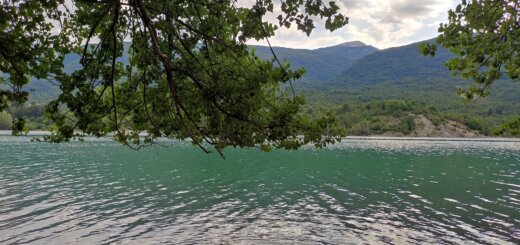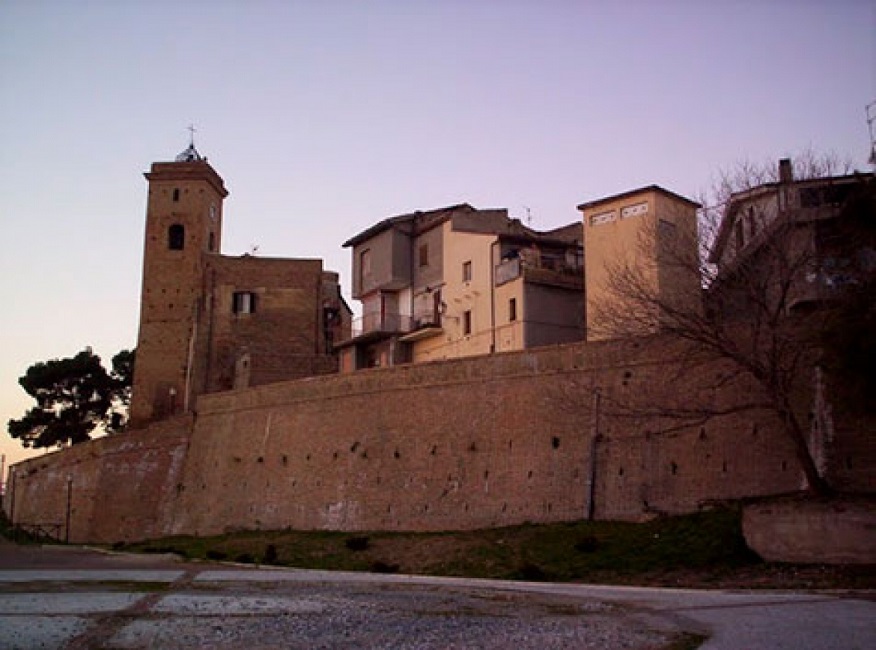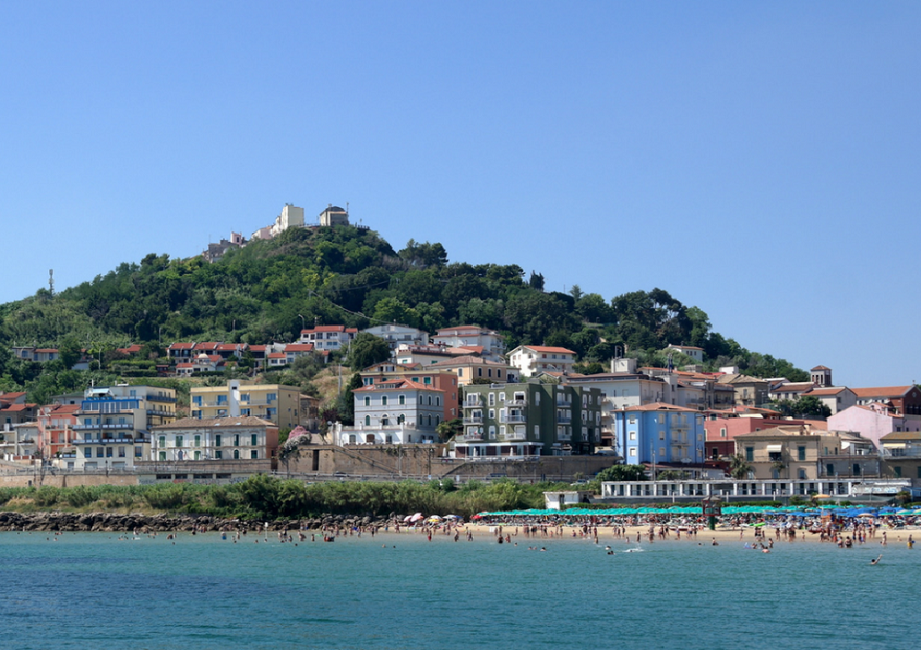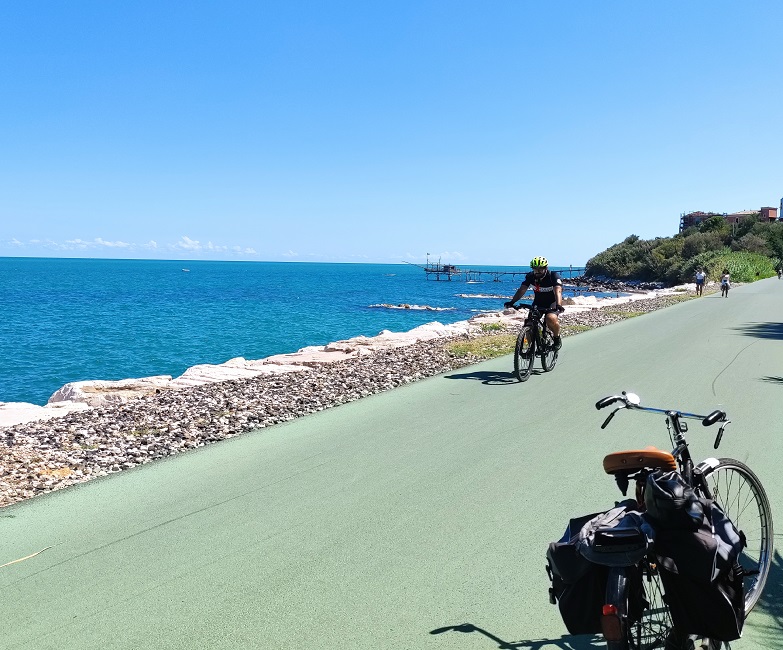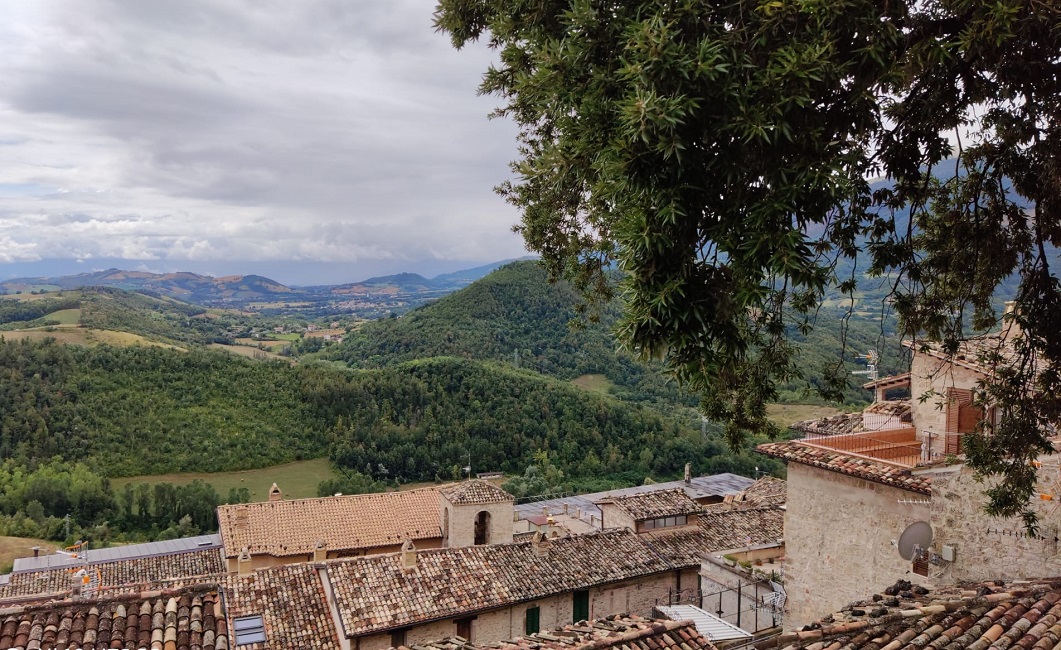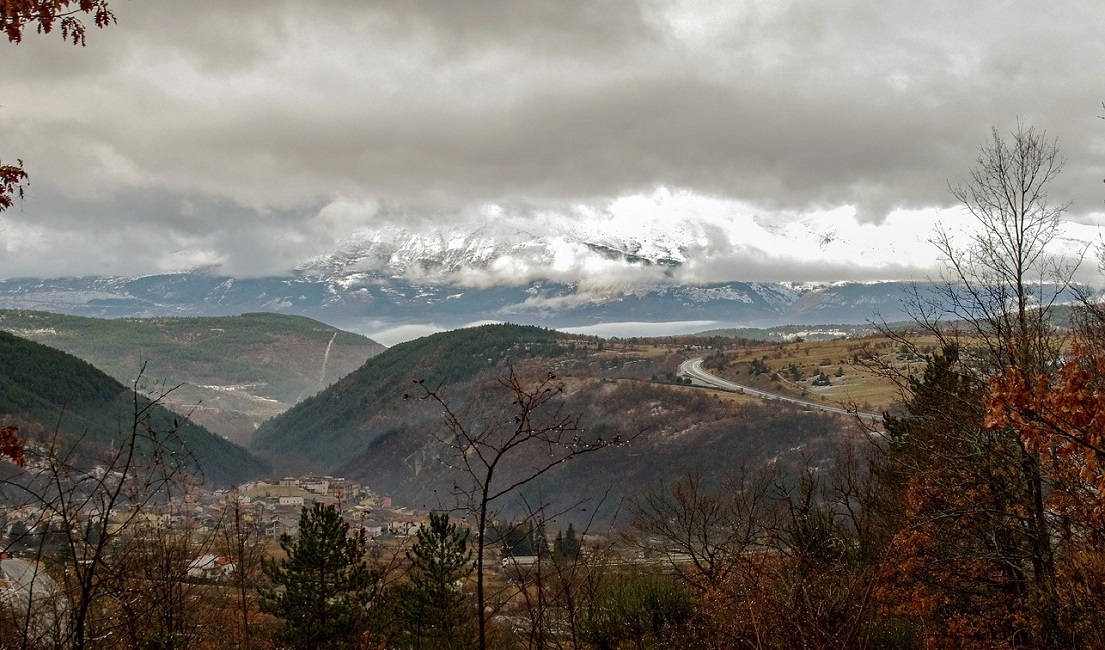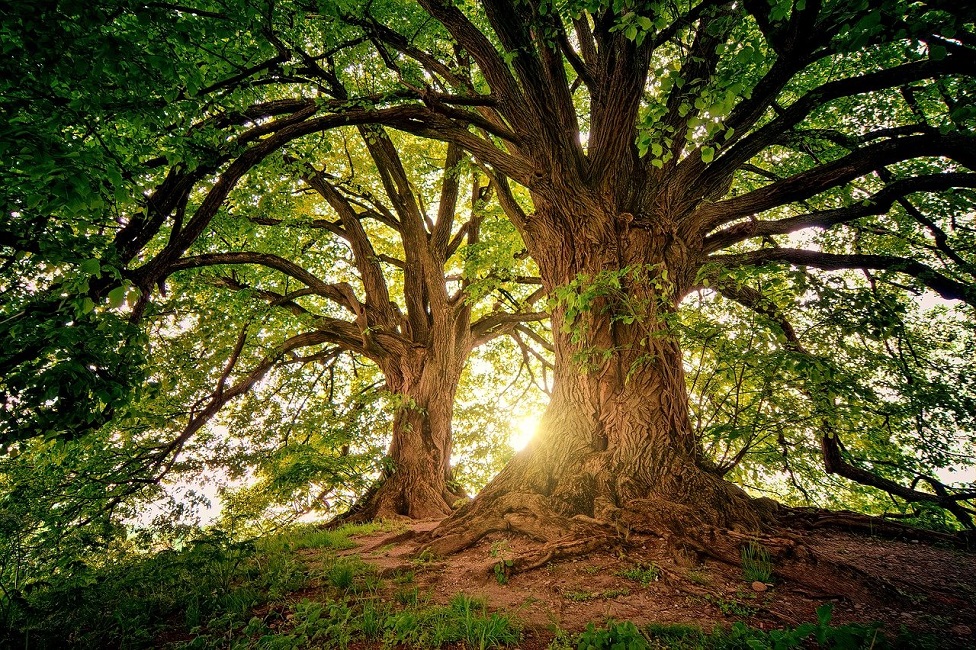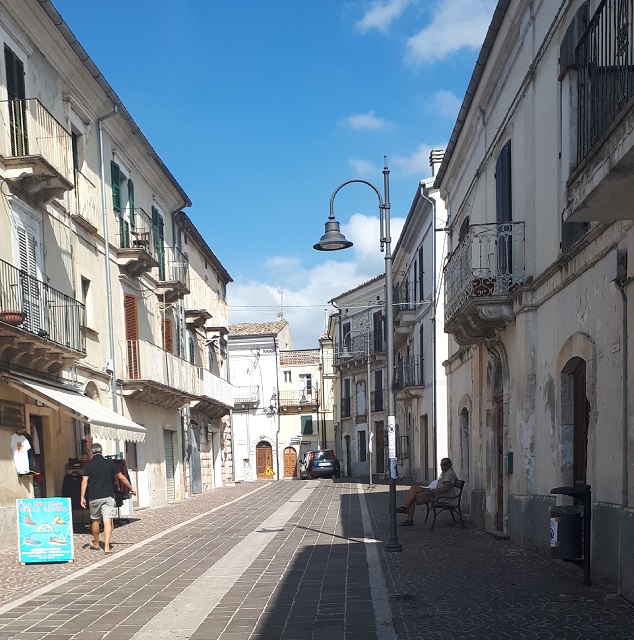Villalago
Villalago is the sort of place where your destination always seems to be at the top of another flight of steps. It requires energy, and it doesn’t help that I’ve clearly approached the town from the wrong end. I find myself in a residential area where the modern houses have an inscrutable, do-not-disturb look on this summer Sunday afternoon.

Still, even now, even here in this quiet town in the hills of Abruzzo, getting ambushed by decibels is not out of the question. Hurtling down the empty street is a vehicle, windows open, music blaring, passengers yelling. I glimpse the occupants as the car roars past: just some teenagers out to beat small-town ennui. In a moment or two they’re gone, the silence folds in again, the dust settles, and so does my galloping pulse.
Torre della Libertà
It’s easy to get lost in Villalago and I do, a lot. In tiny squares appropriated by residents as their backyards I find men stretched out on sunbeds, dozing off their Sunday lunch. I retreat, feeling like a trespasser.
Two women, possibly the only inhabitants (apart from a few rowdy teens) currently awake in this little town, are sitting on their doorstep amid pots of geraniums. ‘I’m lost’, I announce. The older one smiles in delight, then tells me just to follow the road up to ‘la rocca’. The views are marvellous she says.
Behind the women, tucked in among the grey stone houses, is an interesting looking cylindrical tower. A printed card propped on a nearby chair, (along with an aggressive-looking cactus, should you get any strange ideas about actually sitting down), tells me that this is the Torre della Libertà.

It seems the citizens of Villalago of the 1500s were of independent mind, and the tower bears witness to their refusal to bow to their landlords. It is locally called La Torretta, the little tower, from which I can assume that somewhere there is a bigger one.
I ask the women about the For Sale sign in the window. The older one shrugs: someone has had the bad idea of converting the tower into apartments. Then she smiles again. Isn’t Abruzzo beautiful? I smile back in agreement.
La Rocca
I bid the women goodbye and, following their advice, climb up yet another flight of stairs to la rocca, which turns out to be the larger tower, probably part of the medieval castle. It now houses a twin-roomed country-life museum and through the bars I glimpse ancient farming tools and the like.
But I’m more interested in the view, which is indeed worth the climb. Far down below, scrubby hills rear up on either side of the magnificent, sinuous gorge, the Gole di Sagittario. I catch a flash of emerald – a corner of the Lago di San Domenico is just visible.
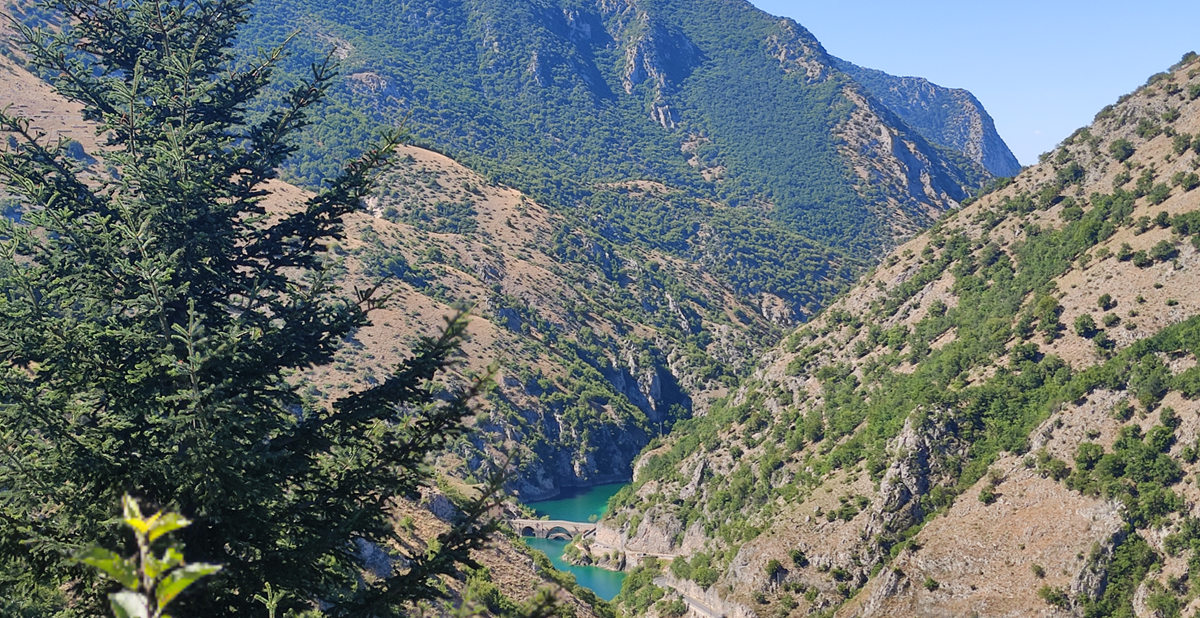
Escher’s Etchings
In the late 1920s the Dutch artist M.C. Escher roamed Abruzzo, taking inspiration from the landscape for his etchings and drawings. He spent time here in Villalago – a fact of which the town is evidently rather proud, given the number of plaques referring to his work. In a shadowy corner there is a reconstruction of his famous 1934 etching Still Life with Mirror, which reflects the lane from a dressing table mirror, itself surrounded by toiletry items.
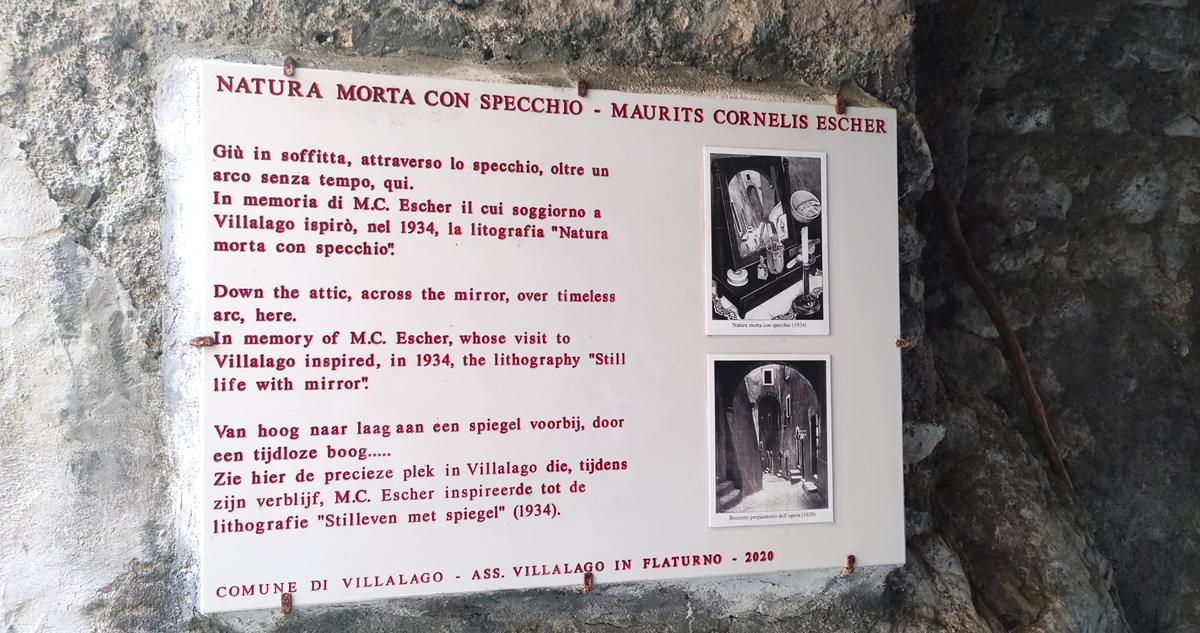
Maybe it was Escher who inspired the artistic touches I find tucked away round corners and under arches. Here is a suspended sculpture, another example of Villalago’s challenging outdoor seating arrangements.
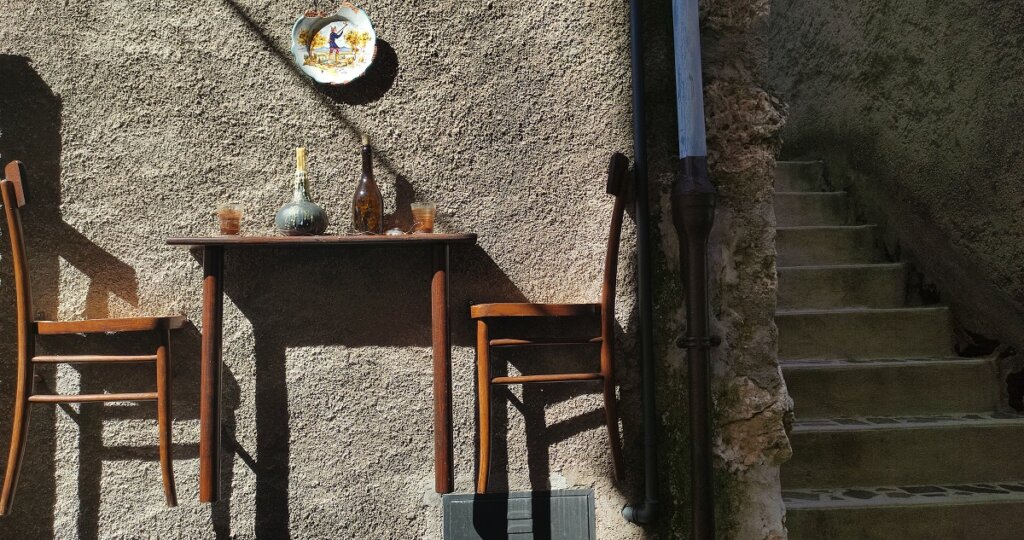
The way down is more straightforward because at last I find the main flight of steps, wide and mostly straight, that I missed on the way up. Here is the Romanesque church of the Madonna di Loreto, and at the foot of the steps, a fountain with drinking water, guarded by the statue of a bear. There is also the main café with a pleasant terrace but with only two patrons, both of whom appear to be tourists.


No lack of lakes
It is generally assumed that ‘lago’ in the town’s name refers to the nearby Lago di San Domenico, known also as the emerald lake. But there is no lack of lakes in the area and three of them are within walking distance of Villalago.
I come upon one while heading southwards out of town. Smaller than Domenico, and less striking, Lago Pio is nevertheless pretty and wonderfully serene. It’s fringed with maple trees, and – hallelujah – furnished with benches all around. There are ducks and herons and fish and, I am told, if you’re lucky you might see whole families of deer when they come down to drink.
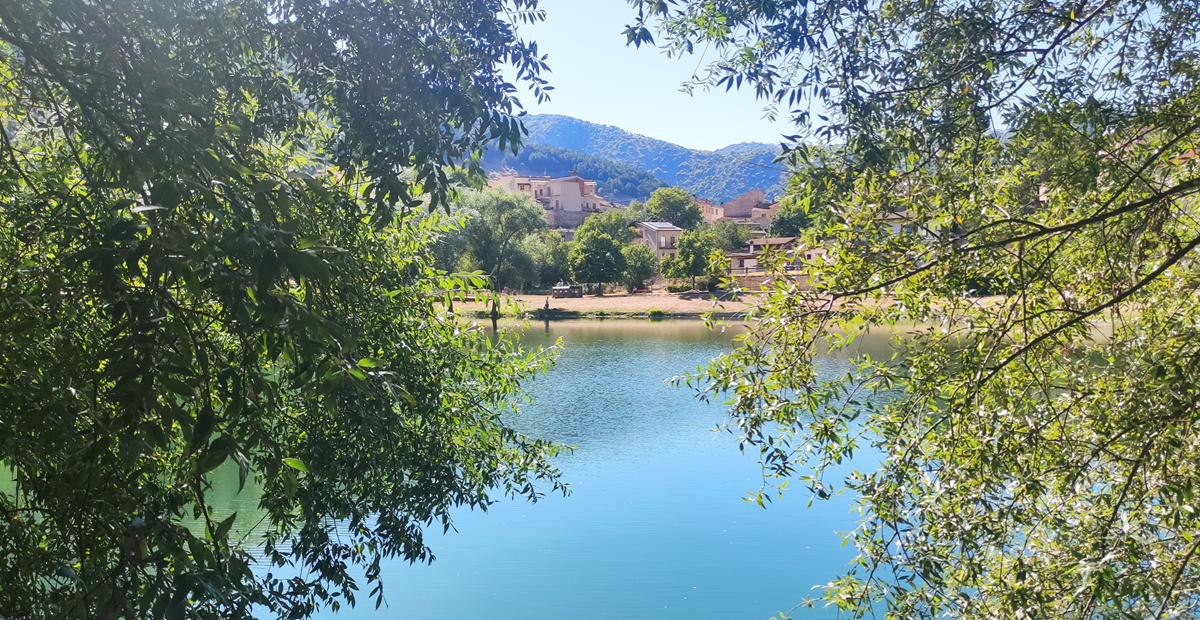
From here the main road proceeds to the much grander and more popular Scanno lake and on the way, a fine restaurant. But that’s another story.
For now, I take a quiet road which passes through a leafy park. This road later becomes a foot and bicycle path, an easy, traffic-free route to Scanno lake. (Note for walkers: a footpath also joins San Domenico lake and Villalago, meaning that San Domenico-Scanno Lake can be covered on foot).
Meanwhile, in the cool green park, I discover life. First, the thwack of tennis balls; then the murmur of human voices. That’s when I see the bar and the tennis courts, where some local children are having a lesson. Between thwacks they glance anxiously over to the sidelines where their parents are too busy gossiping to pay any atttention to their budding Wimbledon champs. Other townspeople of all ages are milling around, enjoying ice creams and beer, shooting the breeze.
Ah, so that’s where everyone is.
All you need to know
From the Rome-Pescara motorway (A25), exit Cocullo. Take Strada Provinciale 479.
Or by train Roma-Pescara, to Anversa-Villalago-Scanno, or to Sulmona and thereafter by bus. (info 0864-210469)


